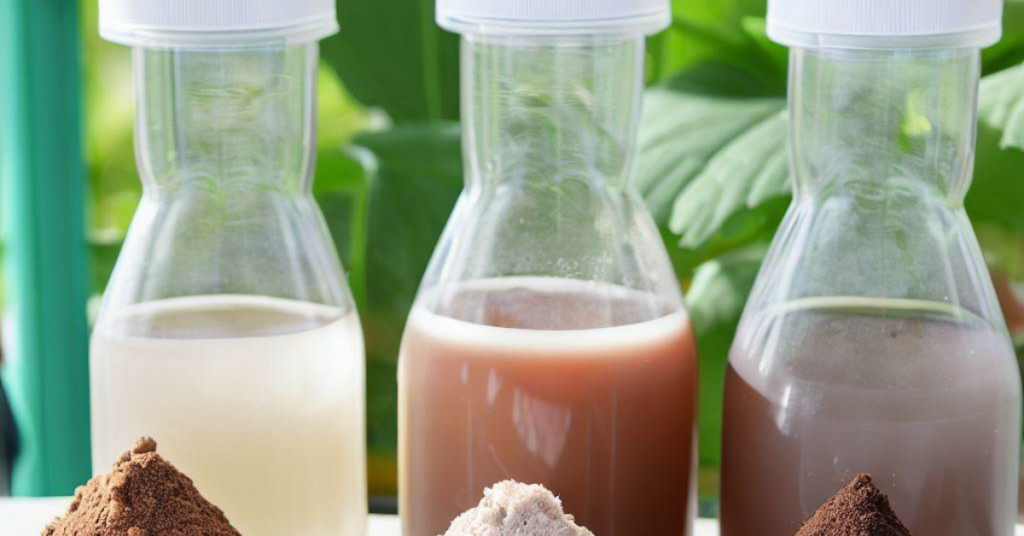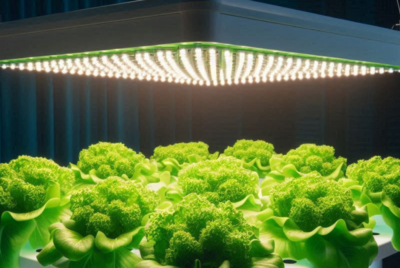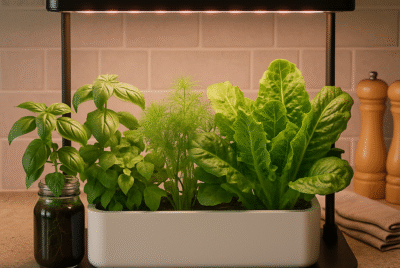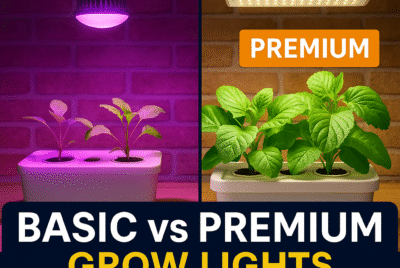Hydroponic Fertilizer : A Full Overview
I have found that one of the most important factors in growing healthy plants is choosing the right fertilizer. Unlike traditional soil-based gardening, hydroponics relies on a carefully calibrated nutrient solution to provide plants with all of the essential nutrients they need to thrive. In this article, I will share with you my personal tips and recommendations for choosing and using hydroponic fertilizers to achieve optimal plant growth.
The Specifics
Before diving into the specifics of hydroponic fertilizers, let’s briefly review what hydroponics is and why it has become such a popular method for growing plants. Hydroponics is a soil-free method of growing plants in a nutrient-rich water solution. By eliminating soil from the equation, hydroponic growers can closely control the nutrients that their plants receive, resulting in faster growth, higher yields, and healthier plants overall.
The Benefits of Hydroponic Fertilizers
The key to success in hydroponics is providing plants with a complete and balanced nutrient solution. Unlike soil, which naturally contains a variety of nutrients, hydroponic growers must manually add nutrients to their water solution. This is where hydroponic fertilizers come in. These specialized fertilizers are designed to provide plants with all of the essential macronutrients (like nitrogen, phosphorus, and potassium) and micronutrients (like iron, calcium, and magnesium) they need to thrive.
One of the major advantages of using hydroponic fertilizers is that they allow growers to closely monitor and adjust the nutrient levels in their water solution. This means that you can tailor the nutrient mix to the specific needs of your plants, whether you are growing tomatoes, lettuce, strawberries, herbs, or any other type of plant. Additionally, hydroponic fertilizers are typically more concentrated than traditional fertilizers, so you can use less fertilizer overall while achieving better results.
Choosing the Right Hydroponic Fertilizer
There are a variety of hydroponic fertilizers on the market, each with their own unique blend of nutrients. When choosing a fertilizer, it’s important to consider the specific needs of your plants, as well as factors like water quality, pH levels, and the stage of growth your plants are in.
For example, some plants may require higher levels of nitrogen during the vegetative stage of growth, while others may need more phosphorus and potassium during the flowering stage. Additionally, if you are using tap water in your hydroponic kit, you may need to choose a fertilizer that is specifically formulated to work with hard water.
Using Hydroponic Fertilizer
Once you have chosen the right fertilizer for your plants, it’s important to use it correctly to ensure optimal growth. In general, hydroponic fertilizers should be added to your water solution in small, incremental doses over time, rather than all at once. This allows you to monitor the nutrient levels in your water solution and make adjustments as needed.
It’s also important to regularly test the pH and nutrient levels in your water solution using a digital meter or test kit. This will help you catch any imbalances or deficiencies before they can harm your plants. Additionally, be sure to follow the manufacturer’s instructions for the specific fertilizer you are using, as the application rate and frequency may vary.
Types of Hydroponic Fertilizers

There are different types of hydroponic fertilizers to choose from, and each has its own benefits and drawbacks. Here are some of the most common types:
Powdered Nutrient Fertilizers:
These are dry, granular fertilizers that are mixed with water to create a nutrient solution. They are easy to store and transport and can be mixed to suit the specific needs of your plants.
Liquid Nutrient Fertilizers:
These are pre-mixed liquid solutions that can be added directly to your hydroponic system. They are convenient and easy to use but can be more expensive than powdered fertilizers.
Organic Nutrient Fertilizers:
These are made from natural sources and are a good option for those who prefer to use organic methods. They are often more expensive and may not provide as much control over nutrient ratios as other types of fertilizers.
How to Choose the Right Hydroponic Fertilizer
Choosing the right hydroponic fertilizer can be challenging, but it is crucial to the success of your plants.
Here are some factors to consider when selecting a fertilizer:
- Plant Type:Different plants have different nutrient needs, so it is essential to choose a fertilizer that is formulated for the specific plants you are growing.
- Growth Stage: Plants have different nutrient requirements during different stages of growth, so you may need to adjust your fertilizer regimen accordingly.
- Water Quality: The quality of your water can affect the performance of your fertilizer. If your water is high in minerals, you may need to use a fertilizer that is designed to work with hard water.
- pH Balance: Your nutrient solution should have the correct pH balance for your plants to absorb the nutrients properly. Make sure the fertilizer you choose is compatible with the pH levels of your water and growing medium.
Choosing the Right Hydroponic Fertilizer
When it comes to selecting the right hydroponic fertilizer, there are several things to consider. First, you should understand the nutritional requirements of the plants you’re growing. Different crops have different nutrient needs, so it’s important to choose a fertilizer that provides the right balance of macronutrients (like nitrogen, phosphorus, and potassium) and micronutrients (like iron, zinc, and copper) for your specific plants.
Next, you’ll need to choose between organic and synthetic fertilizers. Organic fertilizers are made from natural sources, like compost or animal manure, and tend to release nutrients slowly over time. Synthetic fertilizers, on the other hand, are made from chemical compounds and release nutrients quickly.
While both types of fertilizers can be effective in hydroponic systems, some growers prefer organic options because they’re more sustainable and environmentally friendly. However, it’s worth noting that organic fertilizers can be more expensive and may require more frequent applications to maintain optimal nutrient levels.
Pro Tip: If you’re new to hydroponic gardening, it’s a good idea to start with a pre-formulated fertilizer specifically designed for hydroponics. These products are often labeled as “hydroponic nutrients” and can take the guesswork out of selecting the right fertilizer for your plants. My go to fertlizer is Advanced Nutrients and works supebly in most hydroponic systems.
Understanding Hydroponic Fertilizers
Hydroponic fertilizers come in different types, with varying formulations and nutrient ratios.
The most common types include:
- One-part fertilizers: These contain all the essential nutrients in one bottle. They are convenient and easy to use, making them ideal for beginners.
- Two-part fertilizers:These are composed of two bottles of nutrients; one for the growth stage and the other for the bloom stage. They allow for more precise nutrient control and can be customized to suit different plant species.
- Organic fertilizers: These are derived from natural sources, such as worm castings, fish emulsion, and seaweed extracts. They provide slow-release nutrients and improve soil structure, but they may clog hydroponic systems.
Before choosing a hydroponic fertilizer, it’s essential to understand the nutrient needs of your plants. Nitrogen (N), phosphorus (P), and potassium (K) are the three primary macronutrients that plants need to thrive. They are essential for photosynthesis, growth, and fruit production. Other essential nutrients include calcium, magnesium, sulfur, iron, manganese, zinc, and copper.
How to Choose the Right Hydroponic Fertilizer
When choosing a hydroponic fertilizer, consider the following factors:
Nutrient ratio:
Look for a fertilizer with an NPK ratio that matches the plant’s growth stage. A ratio of 3-1-2 is suitable for vegetative growth, while a ratio of 1-3-2 is ideal for flowering and fruiting.
pH level:
Hydroponic systems require a specific pH range for optimal nutrient uptake. Most plants prefer a pH range of 5.5 to 6.5. Choose a fertilizer that can maintain the pH within this range.
Water quality:
The quality of your water can affect the nutrient uptake and pH of your hydroponic system. If you have hard water, consider using a fertilizer that contains chelated micronutrients.
Nutrient availability:
Some hydroponic fertilizers are formulated for specific plant species or hydroponic systems. Choose a fertilizer that is suitable for your plants and system.
How to Apply Hydroponic Fertilizer
The application of hydroponic fertilizer depends on the type of system you’re using. Here are some general guidelines:
Deep Water Culture (DWC):
Add the required amount of fertilizer directly to the reservoir. Stir gently to ensure even distribution.
Nutrient Film Technique (NFT):
Add the fertilizer to the nutrient solution reservoir. Monitor the pH and nutrient levels regularly.
Drip System:
Mix the fertilizer with water in a separate container. Use a timer to regulate the frequency and duration of the nutrient solution delivery.
Ebb and Flow:
Add the fertilizer to the nutrient solution reservoir. The system will flood and drain the container, ensuring even distribution of nutrients.
Mixing and Applying Hydroponic Fertilizer : Step by Step Guide
Once you have selected the right fertilizer for your plants, it is essential to know how to apply it correctly. Here are some tips for applying hydroponic fertilizer:
1. Start with a Clean System:
Before adding fertilizer, make sure your hydroponic system is clean and free of debris. This will help ensure that your plants receive the nutrients they need without any interference.
2. Mix Fertilizer Correctly:
Follow the instructions on your fertilizer package to mix the solution to the proper strength. Overdosing can be harmful to your plants, while underdosing can result in nutrient deficiencies.
In general, most hydroponic fertilizers will need to be mixed with water before being added to the system. You can use a measuring cup or scale to ensure that you’re adding the correct amount of fertilizer to the water.
Pro Tip: When mixing hydroponic fertilizer, it’s important to add the fertilizer to the water, not the other way around. This will help prevent the fertilizer from clumping and ensure that it’s evenly distributed throughout the solution.
Once your fertilizer solution is mixed, you can add it to your hydroponic system according to the manufacturer’s instructions. Depending on your system, you may need to add the fertilizer to a reservoir or mix it directly into the growing medium.
3. Monitor pH Levels:
As mentioned earlier, pH levels are crucial to the success of your nutrient solution. Use a pH meter to monitor the pH of your solution regularly and adjust as needed.
Pro Tip: To ensure that your plants are receiving the right amount of nutrients, it’s important to monitor the pH and nutrient levels of your hydroponic solution regularly. Ideally your pH levels should be between 5.5 and 6.5 for most plants.
4. Maintaining the Fertilizer Solution
It’s important to regularly check and maintain the pH and nutrient levels of the fertilizer solution to ensure the health of your plants. Test the pH level of the solution once a day and adjust it as necessary using pH up or down solutions. Also, monitor the nutrient levels of the solution using an Electrical Conductivity (EC) meter. The EC meter measures the electrical conductivity of the solution, which indicates the amount of dissolved salts and nutrients. Adjust the nutrient levels as necessary by adding more fertilizer or water to the solution.
5. Feeding the Plants
Once your hydroponic system is set up and your fertilizer solution is mixed, it’s time to start feeding your plants. The frequency and amount of feeding will depend on the type of plant and the stage of growth. Young plants will require less fertilizer than mature plants, and some plants may require more frequent feeding than others. Generally, it’s best to start with a lower concentration of fertilizer and gradually increase it as the plants grow.
When feeding your plants, make sure the solution is flowing properly through the system and reaching all the plants evenly. Adjust the flow rate as necessary to ensure all plants are receiving sufficient nutrients.
6. Monitoring and Troubleshooting
Regular monitoring is key to identifying and addressing any issues that may arise in your hydroponic system. Look out for signs of nutrient deficiencies or excesses, such as yellowing or wilting leaves, stunted growth, or unusual discoloration. Adjust the pH and nutrient levels of the solution as needed to correct any imbalances.
Other issues that may arise in a hydroponic system include clogged tubing, algae growth, or pests. Regular cleaning and maintenance can help prevent these issues, but if they do occur, take appropriate steps to address them.
Troubleshooting Common Hydroponic Fertilizer Problems
Despite your best efforts, you may encounter issues with your hydroponic fertilizer at some point. One common problem is nutrient lockout, which occurs when certain nutrients become unavailable to your plants due to imbalances in the pH or nutrient levels in your water solution. To address this issue, you may need to adjust the pH of your water solution or flush your system with fresh water.
Tips for Using Hydroponic Fertilizer
- Start with a low concentration of fertilizer and gradually increase it to avoid nutrient burn.
- Monitor the pH and nutrient levels regularly to avoid nutrient deficiencies or toxicities.
- Flush the system with plain water every few weeks to prevent salt buildup.
- Use a high-quality, pH-balanced fertilizer to ensure optimal plant growth and yield.
- Follow the manufacturer’s instructions and dosage recommendations.
Closing remarks.
Hydroponic fertilizers are an essential part of any hydroponic system. With the right fertilizer, you can provide your plants with the nutrients they need to grow strong and healthy. Remember to choose a fertilizer that is formulated for your specific plants, and follow the instructions carefully when applying it. With a little bit of knowledge and care, you can grow beautiful and bountiful plants with hydroponics. Grow lettuce, tomatoes and strawberries throughout the year.
Using hydroponic fertilizer is a key component of successful hydroponic gardening. By understanding the nutritional needs of your plants, choosing the right fertilizer, and following proper mixing and application techniques, you can ensure that your crops receive the nutrients they need to grow and thrive.
Remember to start with a pre-formulated hydroponic nutrient solution if you’re new to hydroponics, and always follow the manufacturer’s instructions carefully. With a little bit of practice and attention to detail, you’ll be well on your way to growing healthy, nutrient-rich plants with hydroponic fertilizer.
FAQs:
1. Is hydroponic fertilizer better than traditional soil fertilizer?
Yes, hydroponic fertilizer is better than traditional soil fertilizer as it provides all the necessary nutrients directly to the plants’ roots in a controlled environment. With hydroponic fertilizer, you can adjust the nutrient levels based on the plant’s specific needs, resulting in faster and healthier growth.
2. How often should I change the hydroponic fertilizer solution?
It depends on the type of plants and the size of the hydroponic system. As a general rule, you should change the hydroponic fertilizer solution every 2-3 weeks. However, you should monitor the nutrient levels regularly and change the solution if the levels are not optimal for the plants.
3. Can I use regular plant fertilizer in a hydroponic system?
No, you cannot use regular plant fertilizer in a hydroponic system as it is not formulated for hydroponic gardening. Regular plant fertilizers contain high levels of salts, which can harm hydroponic plants. You should use hydroponic fertilizers specifically formulated for hydroponic gardening.
4. How do I know which hydroponic fertilizer to use?
You should choose a hydroponic fertilizer based on the type of plants you are growing and their specific nutrient requirements. Different plants have different nutrient needs, and the hydroponic fertilizer you choose should provide all the necessary nutrients in the correct proportions. You can also consult a hydroponic gardening expert for advice.
5. Can I make my own hydroponic fertilizer?
Yes, you can make your own hydroponic fertilizer using household items such as Epsom salt, baking soda, and water-soluble plant food. However, it is important to ensure that the nutrient levels are balanced and suitable for your plants. Making your own hydroponic fertilizer requires knowledge of plant nutrients and their ratios, so it is recommended to consult an expert before attempting to make
*We may earn a commission from purchases made through our links, at no cost to you. This does not affect our product recommendations. Please see our disclosure to learn more.




